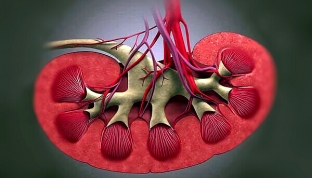High blood pressure – this is one of the main problems of our time. It is the pressure that displays & nbsp; functional abilities of the cardiovascular system of each person. The heart, as the main organ of the body, throws oxygenated blood into the vascular bed, where it spreads under pressure to all its organs and tissues. Arterial hypertension – this is a pathological condition that is characterized by a significant increase in blood pressure, which signals a violation of the normal activity of the cardiovascular system. Read about what renal hypertension is and why it occurs on estet-portal.com.
Causes and mechanisms of development of renal hypertension
Nephrogenic or renal arterial hypertension is a pathological condition characterized by a persistent increase in blood pressure associated with pathology of the urinary system organs or their vessels. Among the many patients suffering from high blood pressure, in almost a third it has a nephrogenic origin. Since the main function of the kidneys is to filter the blood, their various diseases affect the normal functioning of the cardiovascular system. Renal hypertension often leads to the development of serious complications that can cause disability and even death of patients.
Renal hypertension:
- classification of renal hypertension: vasorenal and parenchymal forms;
- etiology of renal hypertension: main causes of the disease;
- pathogenesis of renal hypertension: mechanisms of development of pathology.
Classification of renal hypertension: renovascular and parenchymal forms
In the classification of renal arterial hypertension, it is customary to distinguish two forms of the pathological process:
- renovascular hypertension – is a symptomatic form of arterial hypertension, which occurs as a result of ischemia of the renal parenchyma against the background of damage to the main renal arteries. This form of renal hypertension, in turn, is divided into congenital and acquired;
- parenchymal renal hypertension is the result of a variety of diffuse kidney diseases, in which a significant increase in blood pressure is associated with damage to the glomeruli of the kidneys and intraorganic small arterial vessels.
Etiology of renal hypertension: main causes of the disease
The causes of renal hypertension can be congenital and acquired pathological conditions. Congenital lesions include:
- dysplasia, hypoplasia, thrombosis and embolism of the renal artery;
- arteriovenous fistula of the kidney;
- anomalies in the development of the aorta and renal artery;
- injuries to the vessels of the kidneys;
- congenital anomalies of the kidneys;
- anomalies of other structures of the urinary system: ureters, bladder, urethra.
Acquired disorders that can cause renal hypertension:
- atherosclerosis or thrombosis of the renal artery;
- nephroptosis;
- aortoarteritis with renal artery involvement;
- renal artery aneurysm;
- arteriovenous fistula;
- compression of the renal artery by tumors, cysts, adhesions, or hematomas.

Pathogenesis of renal hypertension: mechanisms of development of pathology
The pathogenesis of renal hypertension is a very complex issue. To date, it is known that several main factors that arise in the pathological state of the organs of the urinary system and their vessels play a role in the formation of this pathology. These include: sodium and water retention, dysregulation of pressor and depressor hormones, stimulation of vasopressin secretion, inhibition of natriuretic factor release, increased formation of free radicals, renal ischemia, and various gene disorders. Against the background of diseases and pathological conditions of the kidneys and their vessels, all these factors become pathogenetic components of the occurrence of renal hypertension.







Add a comment